Etowah Indian Mounds: A Legacy Of The Ancient Mississippian Culture
A. Sutherland - AncientPages.com - Etowah Indian Mounds are a remarkable legacy of the ancient Mississippian culture. The mounds can be found near the juncture of the Etowah River and Pumpkinvine Creek at what today is called the Etowah Indian Mounds State Park.
Artists conception of the Etowah site (9 BR 1), a Mississippian culture archaeological site located on the banks of the Etowah River in Bartow County, Georgia. Built and occupied in three phases, from 1000–1550 CE. All rights held by the artist, Herb Roe © 2016.
Etowah River is a 164-mile-long (264 km) waterway that rises northwest of Dahlonega, Georgia, north of Atlanta.
Ancient Mississippian Culture Was More Advanced Than Previously Thought
Ancient artifacts discovered in burials within the Etowah site indicate that the ancient mound builders developed an artistically and technically advanced culture.
Chief Mound (Mound A) - Image credit: Torqtorqtorq - CC0
In the 19th century, European-American settlers mistakenly believed that the mounds had been built by the Cherokee, who then occupied the region. However, the Iroquoian-speaking tribe did not reach this part of Georgia until the late 18th century and could not have built the mounds. Later examinations revealed the mounds were created by the Mississippian culture that arrived at the Etowah Indian Mounds site about 950 AD. The place was home to several thousand Native Americans.
The site - scattered across an area of 54-acre - contains six earthen mounds, a plaza, a village site, borrow pits, and a defensive ditch.
Only nine percent of this site has been excavated, so we still don't know much about the ancient Mississippian culture and its traditions, customs, and beliefs.
Illustration of a Rogan Plate a repoussé copper plate falcon dancer found at Etowah but believed to have been fabricated at Cahokia in the 13th century. Image credit: Herb Roe - CC BY-SA 3.0
Discovered artifacts show natives decorated themselves with shell beads, paint, complicated hairdos, feathers, and copper ear ornaments. Hand-carved stone effigies weighing 125 pounds still bear some original pigments. Numerous copper tools, weapons, and decorative copper plates accompanied the burials of Etowah's elite class members.
Numerous clay figurines and ten Mississippian stone statues have been found through the years in the vicinity of Etowah.
Many are paired statues portraying a man sitting cross-legged and a woman kneeling. The female figures wear wrap-around skirts, and males are usually portrayed without visible clothing, although both typically have elaborate hairstyles.
Etowah had three central platform mounds and three lesser mounds. There were wars, and rituals were often practiced.
Marble effigies from the Etowah Mound C, ca. 1250–1375: kneeling woman on left, and man on right. Image credit: Heironymous Rowe - CC BY-SA 3.0
Towering over the community, the 63-foot Temple Mound was likely used as a platform for the home of the priest-chief. On another mound, the nobility was buried in elaborate costumes accompanied by items they would need in their afterlives.
Mississippian Culture In Decline
In 1540, Hernando de Soto led 600 Spanish soldiers, business people, entrepreneurs, and priests on a journey through Georgia and the Southeast. The group searched for gold and other wealth they could claim for themselves and their fellow Spaniards. Along the journey, de Soto often took shelter with American Indians. At the area of present-day Carter's Lake de Soto visited a capital city of the Georiga Moundbuilders.
By the time Hernando de Soto arrived in 1540, archaeologists generally agreed that the Mississippian culture was in decline, and the Etowah Mounds site was abandoned. Control may have passed to a Mound Builder city northeast of Etowah Mounds near present-day Carters, Georgia.
Updated on July 11, 2022
Written by – A. Sutherland AncientPages.com Senior Staff Writer
Copyright © AncientPages.com All rights reserved. This material may not be published, broadcast, rewritten or redistributed in whole or part without the express written permission of AncientPages.com
Expand for references
References:
King A. Etowah: The Political History of a Chiefdom Capital
More From Ancient Pages
-
 European Neolithic Family Trees Shed Light On Social Organization
Archaeology | Jul 27, 2023
European Neolithic Family Trees Shed Light On Social Organization
Archaeology | Jul 27, 2023 -
 Spectacular Giant Bronze Age Hall Found Near Berlin, Germany May Be Connected To Legendary King Hinz
Archaeology | Nov 6, 2023
Spectacular Giant Bronze Age Hall Found Near Berlin, Germany May Be Connected To Legendary King Hinz
Archaeology | Nov 6, 2023 -
 The Hittites, Mysterious People Of A Thousand Gods – Collapse Of The Hittite Empire
News | Sep 9, 2015
The Hittites, Mysterious People Of A Thousand Gods – Collapse Of The Hittite Empire
News | Sep 9, 2015 -
 Neanderthals Buried Their Dead – New Evidence
Archaeology | Dec 10, 2020
Neanderthals Buried Their Dead – New Evidence
Archaeology | Dec 10, 2020 -
 Mysterious Cucuteni-Tyrpillian Culture Burned Their Settlements For Unknown Reasons
Civilizations | Feb 12, 2021
Mysterious Cucuteni-Tyrpillian Culture Burned Their Settlements For Unknown Reasons
Civilizations | Feb 12, 2021 -
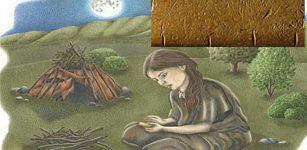 Oldest Lunar Calendar Engraved On A Pebble Dated To 10,000 Years Ago
Archaeology | Aug 5, 2019
Oldest Lunar Calendar Engraved On A Pebble Dated To 10,000 Years Ago
Archaeology | Aug 5, 2019 -
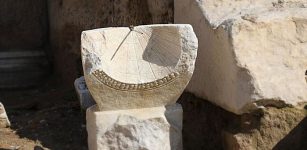 2,000-Year-Old Sundial Discovered In Ancient City Of Laodicea, Turkey
Archaeology | Mar 25, 2020
2,000-Year-Old Sundial Discovered In Ancient City Of Laodicea, Turkey
Archaeology | Mar 25, 2020 -
 Mysterious Cave With Giant Skulls Decorated By The Neanderthals Discovered In Spain
Archaeology | Jan 27, 2023
Mysterious Cave With Giant Skulls Decorated By The Neanderthals Discovered In Spain
Archaeology | Jan 27, 2023 -
 ‘Tonina Chiapas’ Mayan Pyramid In Southern Mexico Is Among The Largest Yet Found
Civilizations | Oct 29, 2018
‘Tonina Chiapas’ Mayan Pyramid In Southern Mexico Is Among The Largest Yet Found
Civilizations | Oct 29, 2018 -
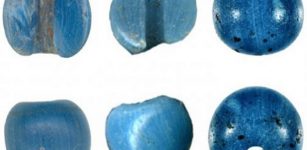 How Did These Beautiful Venetian Glass Beads Reach North America Long Before Columbus?
Archaeology | Feb 15, 2021
How Did These Beautiful Venetian Glass Beads Reach North America Long Before Columbus?
Archaeology | Feb 15, 2021 -
 400-Year-Old Shipwreck Found Off The Coast Of Portugal Labeled ‘Discovery Of A Decade’
Archaeology | Sep 26, 2018
400-Year-Old Shipwreck Found Off The Coast Of Portugal Labeled ‘Discovery Of A Decade’
Archaeology | Sep 26, 2018 -
 On This Day In History: Berlin Victory Parade Took Place – On September 7, 1945
News | Sep 7, 2016
On This Day In History: Berlin Victory Parade Took Place – On September 7, 1945
News | Sep 7, 2016 -
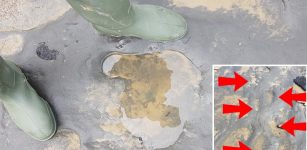 Oldest Footprints In Europe Belonged To A Mysterious 950,000-Year-Old Ancestor
Archaeology | Jul 22, 2019
Oldest Footprints In Europe Belonged To A Mysterious 950,000-Year-Old Ancestor
Archaeology | Jul 22, 2019 -
 What Is The History Of Pancakes?
Ancient History Facts | Mar 7, 2024
What Is The History Of Pancakes?
Ancient History Facts | Mar 7, 2024 -
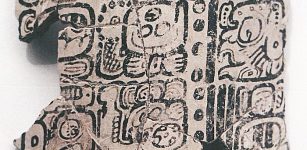 Painted Komkom Vase With Longest Hieroglyphic Text Unearthed In Belize
Archaeology | Apr 24, 2019
Painted Komkom Vase With Longest Hieroglyphic Text Unearthed In Belize
Archaeology | Apr 24, 2019 -
 Amazing Adventure Of The Viking Who Escaped A Death Sentence Using His Artistic Talents
Featured Stories | Feb 9, 2025
Amazing Adventure Of The Viking Who Escaped A Death Sentence Using His Artistic Talents
Featured Stories | Feb 9, 2025 -
 1,500-Year-Old Christian Reliquary Found In An Unknown Church In Irschen, Austria
Archaeology | Jun 26, 2024
1,500-Year-Old Christian Reliquary Found In An Unknown Church In Irschen, Austria
Archaeology | Jun 26, 2024 -
 Bizarre Devil’s Tramping Ground In North Carolina Is Avoided By People And Animals
Featured Stories | May 1, 2019
Bizarre Devil’s Tramping Ground In North Carolina Is Avoided By People And Animals
Featured Stories | May 1, 2019 -
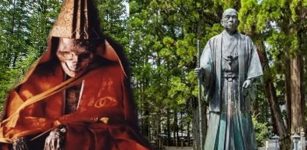 What Was The Extreme Ritual Of Sokushinbutsu?
Ancient Traditions And Customs | Jun 20, 2018
What Was The Extreme Ritual Of Sokushinbutsu?
Ancient Traditions And Customs | Jun 20, 2018 -
 ‘Joyeuse’ – Legendary Sword With Relics Of Saints Was A Private Treasure Of Emperor Charlemagne
Artifacts | Dec 24, 2021
‘Joyeuse’ – Legendary Sword With Relics Of Saints Was A Private Treasure Of Emperor Charlemagne
Artifacts | Dec 24, 2021




